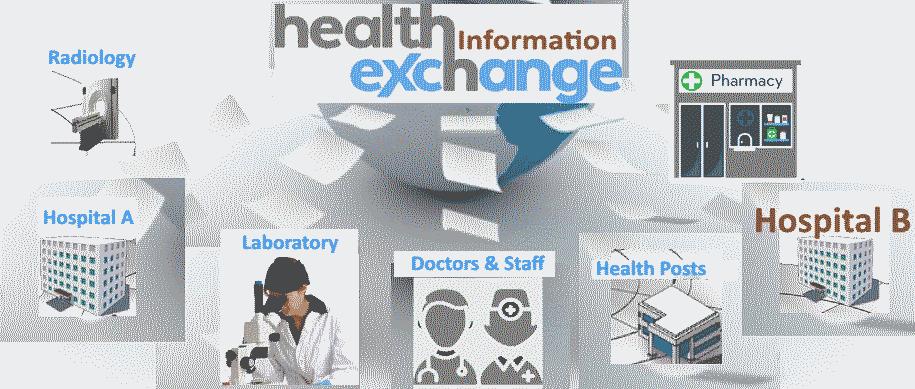HEALTH INFORMATION EXCHANGE
Health information exchange (HIE) is the electronic transmission of healthcare-related data among medical facilities, health information organization. A Health Information Exchange (HIE) is a complete record of all care provided and all data collected by healthcare providers. It includes all information about a patient that is entered by all members of the healthcare team—including, but not limited to physicians, nurses, pharmacists, and aides.

 |
 |
 |
|---|---|---|
ConnectHIE connect various disparate applications through its unique integration technology to create a single, comprehensive Patient Health Record. |
ProtectHIE protect Patient Health Information using the highest security, intrusion defense, prevention technology, while in strict compliance of privacy and standards. |
ControlOnly an authorized user with permissible purposes can enter, view or publish data. Patients are empowered with secured access to their Personal Health Record from multiple sources through a single portal. |
What is HIE?
Health Information Exchange allows health care professionals and patients to appropriately access and securely share a patient’s medical information electronically. There are many health care delivery scenarios driving the technology behind the different forms of health information exchange available today. Electronic health information exchange (HIE) allows doctors, nurses, pharmacists, other health care providers and patients to appropriately access and securely share a patient’s
vital medical information electronically—improving the speed, quality, safety and cost of patient care.
Appropriate, timely sharing of vital patient information can better inform decision making at the point of care and allow providers to
○ Avoid readmissions
○ Avoid medication errors
○ Improve diagnoses
○ Decrease duplicate testing
If a practice has successfully incorporated faxing patient information into their business process flow, they might question why they should transition to electronic health information exchange. Many benefits exist with information exchange regardless of the means of which is it transferred. However, the value of electronically exchanging is the standardization of data. Once standardized, the data transferred can seamlessly integrate into the recipients' Electronic Health Record (EHR), further improving patient care. For example:
○ If laboratory results are received electronically and incorporated into a provider’s EHR , a list of patients with diabetes can be generated. The provider can then determine which of these patients have uncontrolled blood sugar and schedule necessary follow-up appointments
HIE Benefits
Sharing electronic patient information enables providers to:
• Access and confidentially share patients’ vital medical history, no matter where patients are receiving care—specialists’ offices, labs, or emergency rooms
• Provide safer, more effective care tailored to patients’ unique medical needs
To better track and securely share patients’ complete medical histories, more and more health care providers are participating in health information exchange (HIE). HIE helps facilitate coordinated patient care, reduce duplicative treatments and avoid costly mistakes. This practice is growing among health providers because the need for HIE is clear and the HIE benefits are significant.
HIE benefits include:
• Provides a vehicle for improving quality and safety of patient care by reducing medication and medical errors
• Stimulates consumer education and patients' involvement in their own health care
• Increases efficiency by eliminating unnecessary paperwork
• Provides caregivers with clinical decision support tools for more effective care and treatment
• Eliminates redundant or unnecessary testing
• Improves public health reporting and monitoring
• Creates a potential loop for feedback between health-related research and actual practice
• Facilitates efficient deployment of emerging technology and health care services
• Provides the backbone of technical infrastructure for leverage by national and State-level initiatives
• Provides a basic level of interoperability among electronic health records (EHRs) maintained by individual physicians and organizations
• Reduces health related costs.
Electronic health information systems can help prevent errors by ensuring that everyone involved in a patient’s care—whether in a primary care setting, a specialists’ office or emergency department—has access to the same information.
HIE also encourages efficient care by enabling automatic appointment reminders or follow-up instructions to be sent directly to patients, and prescriptions directly to pharmacies.
HIE reduces the amount of time patients spend filling out paperwork and briefing their providers on their medical history, allowing more time for discussions about health concerns and treatments.
And by saving time for patients and providers along the entire continuum of health care delivery, HIE has the potential to both reduce costs and improve health outcomes.